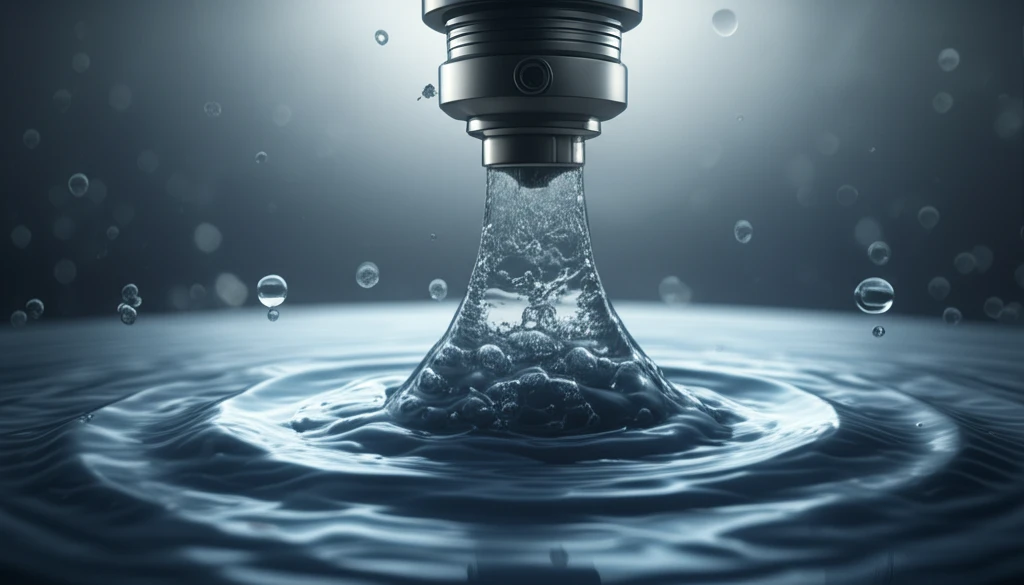
Gel Fiber Formation: The Science Behind the Perfect Alginate Strand
"Explore the fluid dynamics and chemical reactions that create gel fibers, and how these insights can impact biomedicine and beyond."
The creation of solid-like polymeric gels within flowing liquids presents a fascinating area of study, blending physics and chemistry in intriguing ways. This phenomenon, where a chemical reaction at the interface of two liquids results in a gel, holds significant potential across diverse sectors, including biomedicine, oil and gas extraction, water treatment, and the development of advanced sensors. Unlike traditional melt-spinning processes, the continuous production of these gels involves an evolving interface that presents unique challenges and opportunities.
One of the most commonly used materials in this field is sodium alginate, derived from brown seaweeds. Its special property lies in its ability to cross-link when exposed to a divalent cationic solution, such as calcium chloride. The calcium ions replace sodium ions, effectively creating bridges between the alginate polymer chains. This reaction, nearly instantaneous and irreversible, transforms the liquid mixture into a solid-like gel capable of supporting tensile stresses.
Understanding the factors that influence the radius and overall formation of these gel fibers is crucial. Researchers are exploring the complex interplay between fluid dynamics and chemical reactions, seeking to optimize the process for various applications. By manipulating the flow of liquids and controlling the reaction environment, scientists aim to fine-tune the properties of the resulting gel fibers, paving the way for innovations in numerous technological fields.
Unraveling the Gel Formation Process: Key Factors at Play

The process of creating alginate gel fibers involves a delicate balance of several key elements. The initial reaction occurs when the alginate solution meets the calcium chloride solution at the nozzle. Understanding and controlling this initial contact is vital for determining the fiber's properties. Several factors influence the continuous fabrication of alginate gel fibers.
- Flow Dynamics: The way the liquids flow and interact significantly affects the shape and size of the resulting gel fiber. Adjusting the flow rates and patterns can help control the fiber's dimensions.
- Chemical Reaction: The speed and completeness of the cross-linking reaction dictate the gel's density and strength. Factors like concentration and mixing efficiency play critical roles.
- Surface Tension: The interfacial forces between the liquids influence the fiber's shape and stability, particularly in the initial stages of formation.
- Viscosity: The viscosity of the alginate solution changes as the gel forms, affecting the flow and final structure of the fiber.
The Future of Gel Fiber Technology
The ongoing research into alginate gel fiber formation promises exciting advancements across various fields. By refining our understanding of the underlying science and optimizing the manufacturing processes, we can unlock the full potential of this versatile material. From drug delivery systems and tissue engineering to environmental remediation and advanced sensors, gel fiber technology is poised to make a significant impact on our world.
